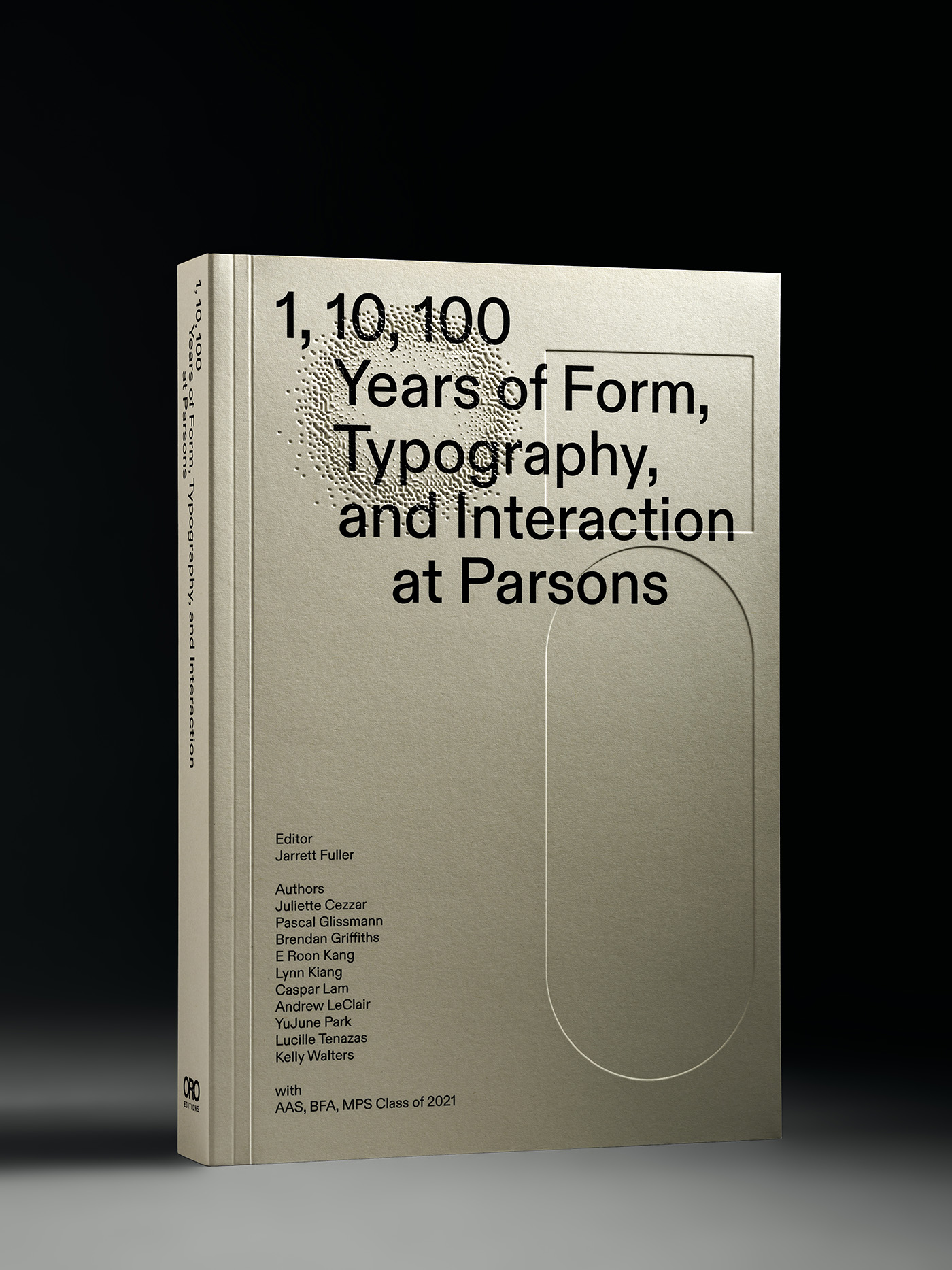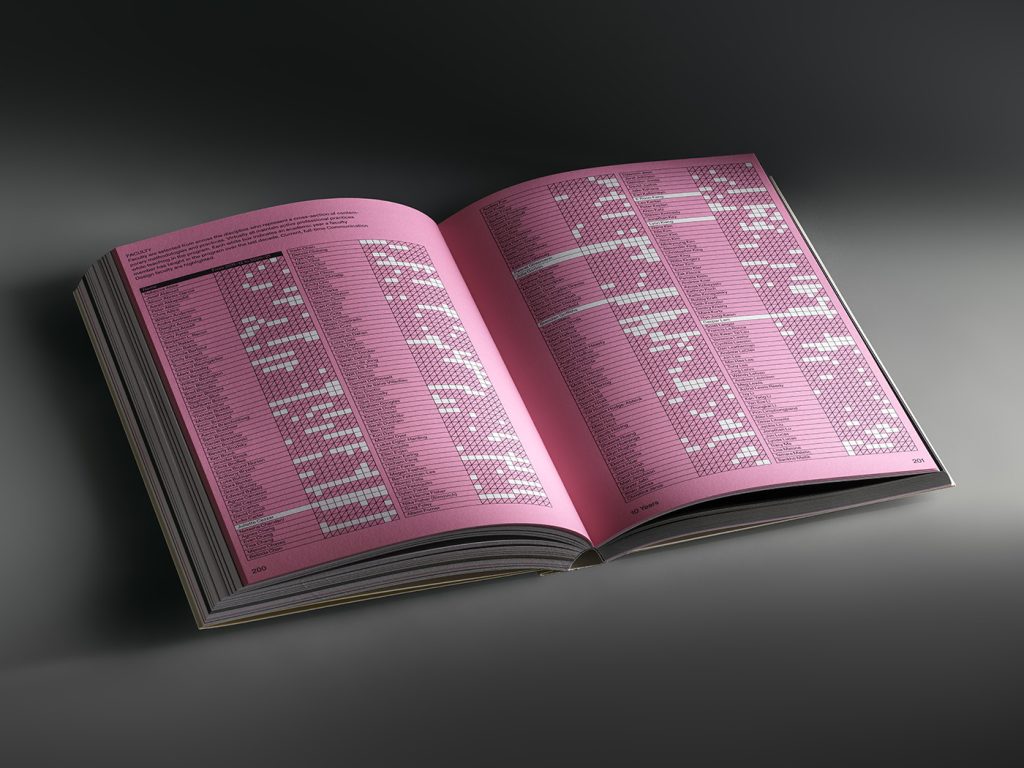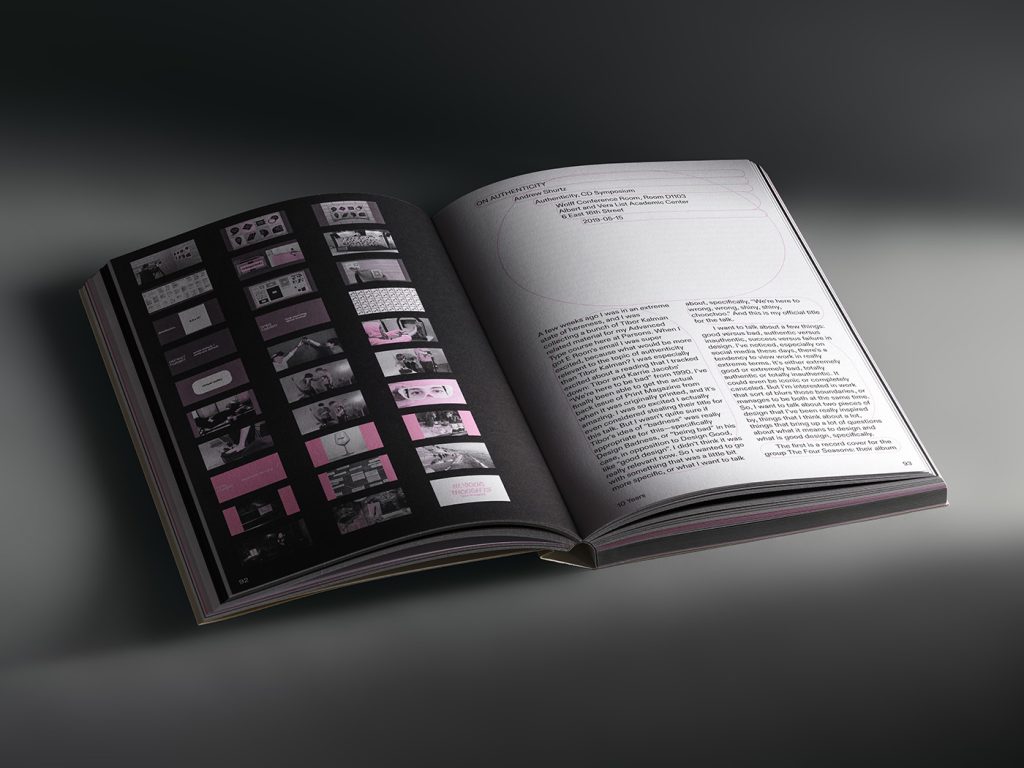
Communication Design at Parsons Celebrates Centennial with New Book
As the number one art and design school in the country, Parsons School of Design is filled with innovative programs, acclaimed faculty, and curious students eager to challenge the status quo. The top-rated school has been a leader in various artistic disciplines for decades, including Communication Design, which was the first undergraduate program of its kind when Parsons began offering courses in the subject 100 years ago.
Now, as the program celebrates its centennial, professors and faculty members from throughout Communication Design, which is housed within the School of Art, Media, and Technology at Parsons, have written a book, “1, 10, 100 Years: Form, Typography, and Interaction at Parsons.” The new book serves as a retrospective on the evolving nature of the discipline seen through the unique pedagogical lens and work of the teachers and students that form the Communication Design community at Parsons, and captures three distinct moments in time: the last year, the last decade, and the last century.
“As the Parsons Communication Design programs have grown in stature within The New School and in the wider graphic design community, we began to reflect on how we could continue to evolve to provide an education that would enable our students to push the future of graphic design forward,” shared Caspar Lam, Director of the BFA Communication Design program, and a co-author of the book. “This inevitably led to a retrospective of the program’s history as a way of understanding conceptions of the discipline itself.”
The book looks back at different time periods of education in three engaging chapters: 100 Years, 10 Years, and 1 Year. The ‘100 Years’ chapter discusses the history and objectives of design education. The ’10 Years’ includes essays and heavy data illustrating the teaching and learning that took place in recent years, along with faculty research and transcripts of lectures and conversations by visiting practitioners – coming from all corners of academia and industry, including California College of Arts, Pratt, Rutgers, Dropbox, Glitch, McKinsey & Company, and Google. The last chapter, ‘1 Year’ presents thesis work from the AAS, BFA, and MPS classes of 2021 along with information about courses and other activities of the year.
“Over the past decade, Communication Design faculty have brought together typography— present from the first design courses at Parsons— and interaction into a unique educational philosophy that embraces the evolving methods of production that characterize contemporary graphic design,” explained Lam. “This was shaped by a group of core faculty whose voices we wanted to capture. In addition, our long running lecture series and symposia provided an opportunity to capture some of the thoughts of our interlocutors who have helped all of us understand more deeply the different ways in which graphic design is conceived and practiced.”


The growth of the program reflects the larger evolution of graphic design as a distinct discipline from advertising. Though it is a community situated inside a global metropolis that is also one of the world’s commercial design capitals, Communication Design at Parsons is not a vocationally oriented program. Experienced educators who have a unique commitment to design practice teach alongside professionals from the highest echelons of the industry and newly minted MFA graduates with independent practices. This dynamic mix is unusual for academically-oriented design schools.
While the book is, in content, a celebration of the 100 years of history and education at Parsons, in form, it is a manifestation of the culture of experimentation and challenging the technological landscape that designers face today. Designed using unconventional methods of production using a custom set of softwares, the book is made with automated, logic-driven typesetting and layout.
“We propose that communication designers should focus beyond the surface appearance of things towards these underlying layers of technology,” says E Roon Kang and Andrew LeClair, the two designers of the book. “Existing as an automated, printed snapshot of a database in time, this book opens new possibilities for creative expressions, treating books as physical representations of structured data.”
In addition to highlighting the educational approach of Parsons, the book also showcases a deep collaboration between the co-authors of the book, which in addition to Lam includes Communication Design faculty members Juliette Cezzar, Pascal Glissmann, Brendan Griffiths, E Roon Kang, Lynn Kiang, Andrew LeClair, YuJune Park, Lucille Tenazas, Kelly Walters, and Jarrett Fuller, who edited the book and now teaches at North Carolina State University. The authors are hopeful that readers learn more about what graphic and communication design mean in today’s world, and how the trajectories that designers choose are ever shifting.
“We also hope that readers will be able to get a glimpse into how Communication Design at Parsons has been able to hold many of the tensions in graphic design together,” shares Lam. “Some designers practice in agencies and technology giants. Others work independently and use design as a method to interrogate culture and society. The different orientations of practice form a larger ecosystem of design that we have tried very hard to sustain through ideas of plurality and friendship.”